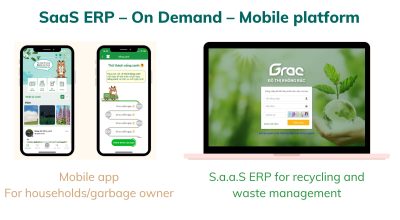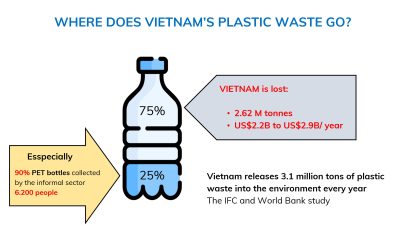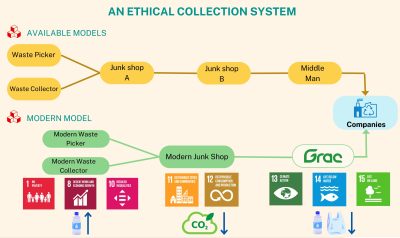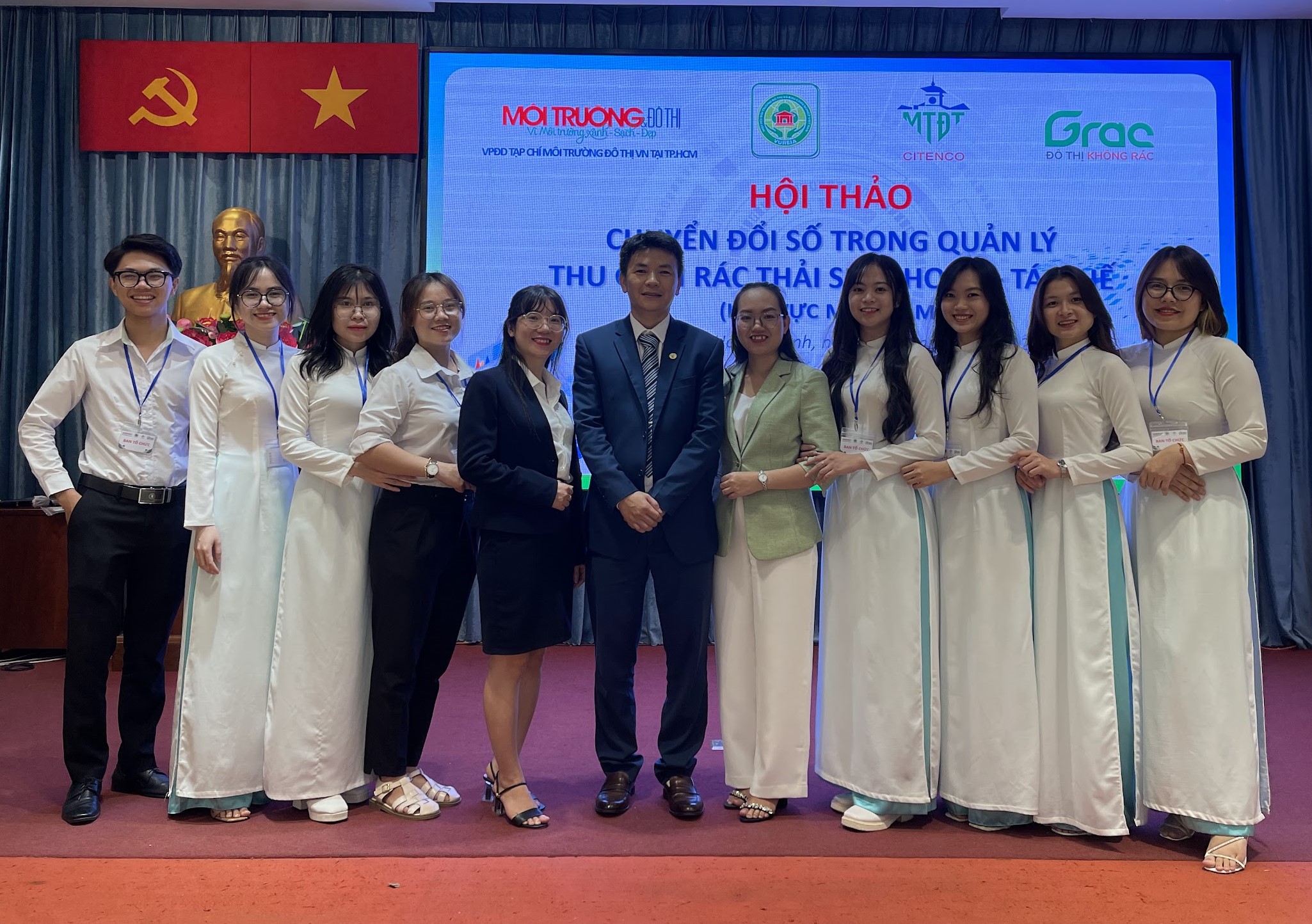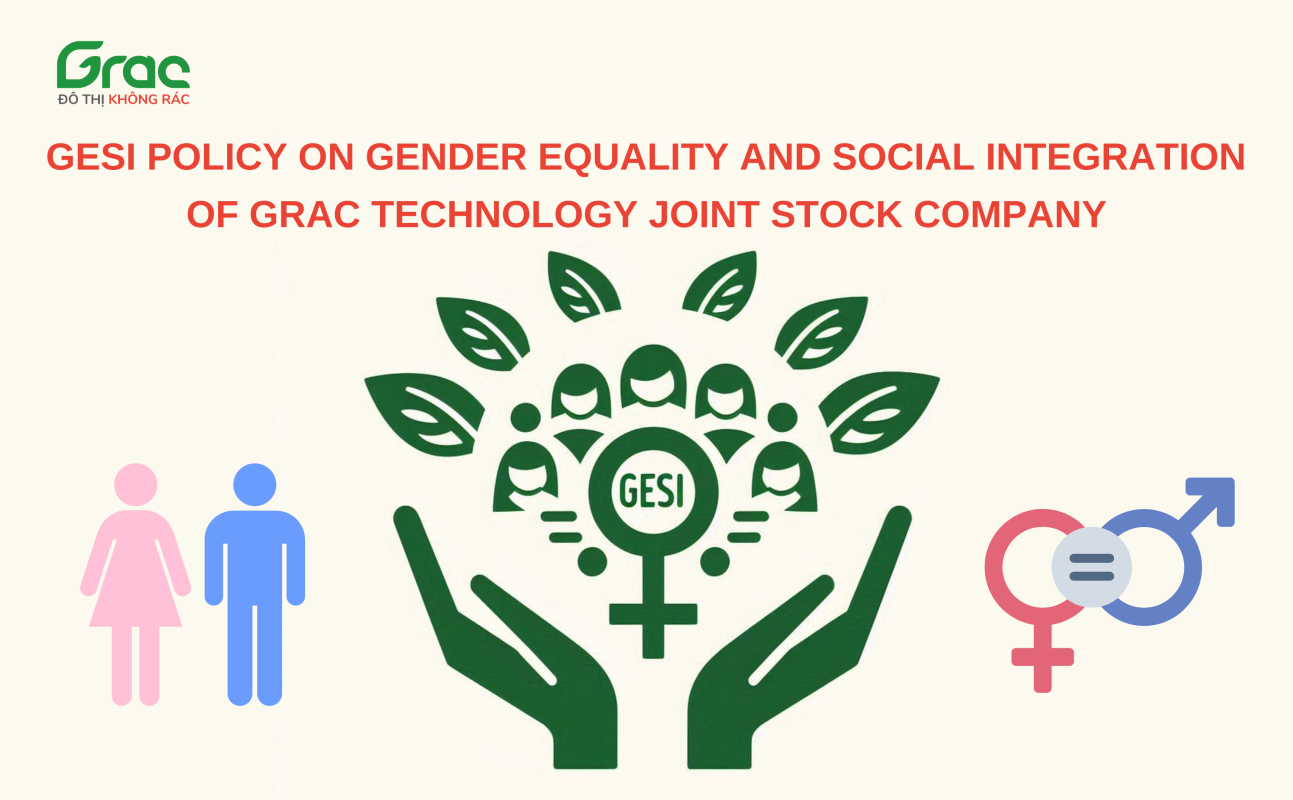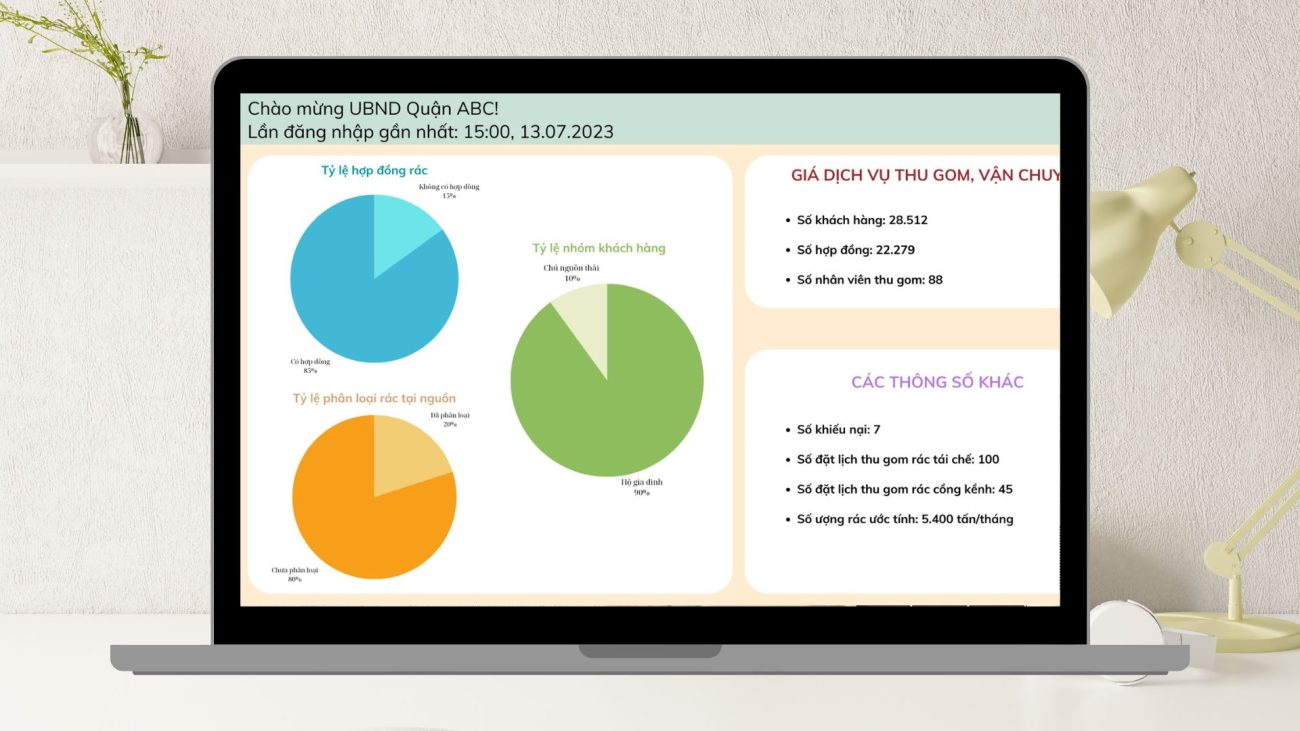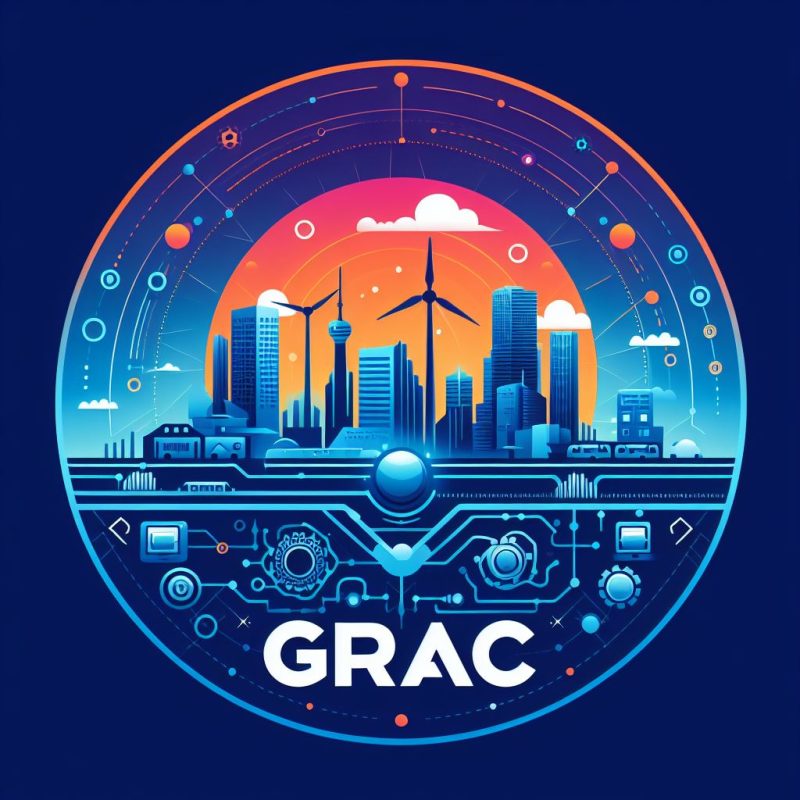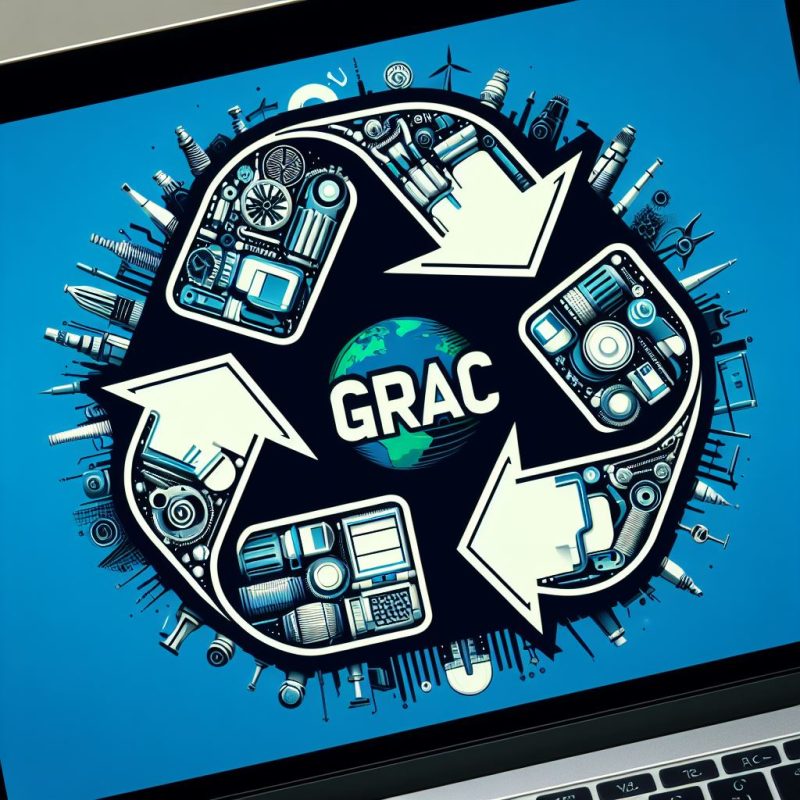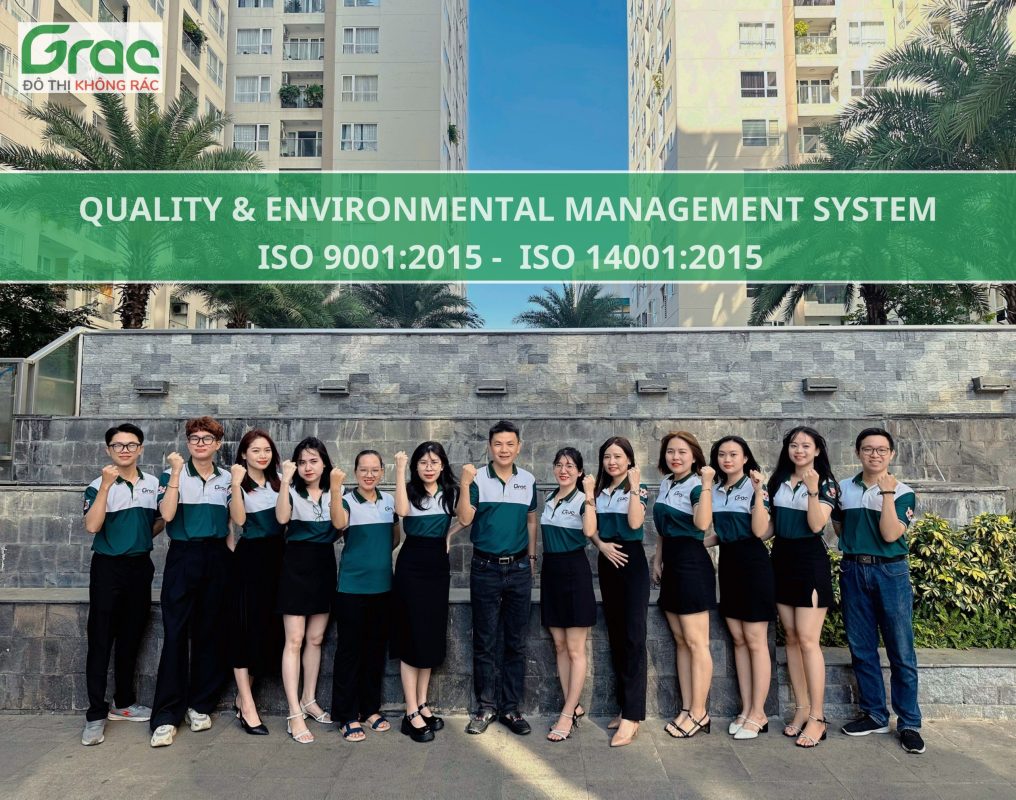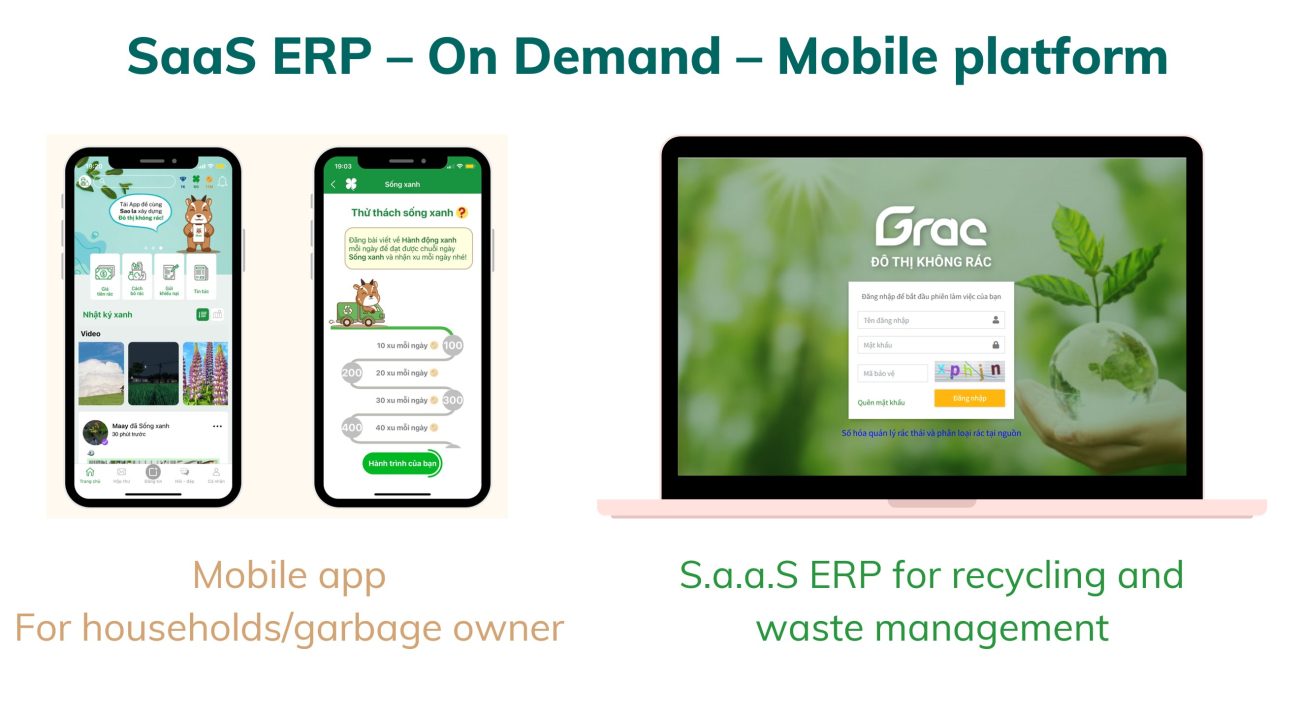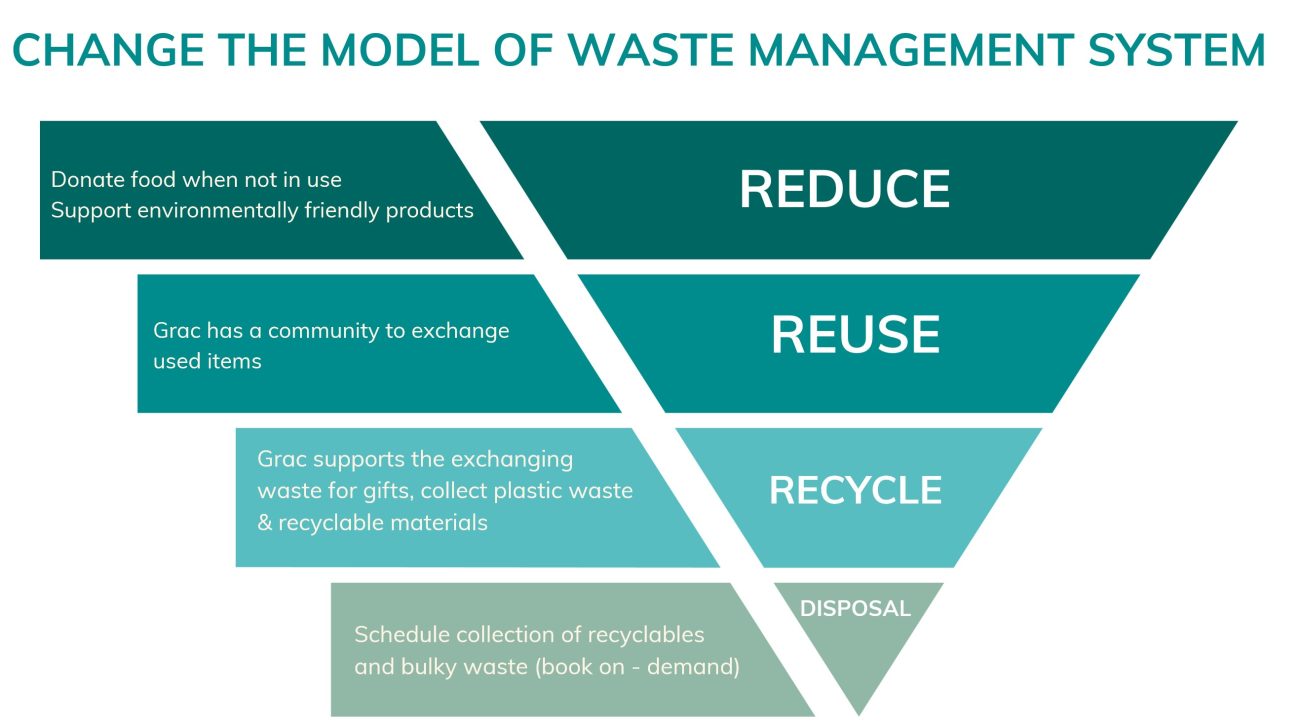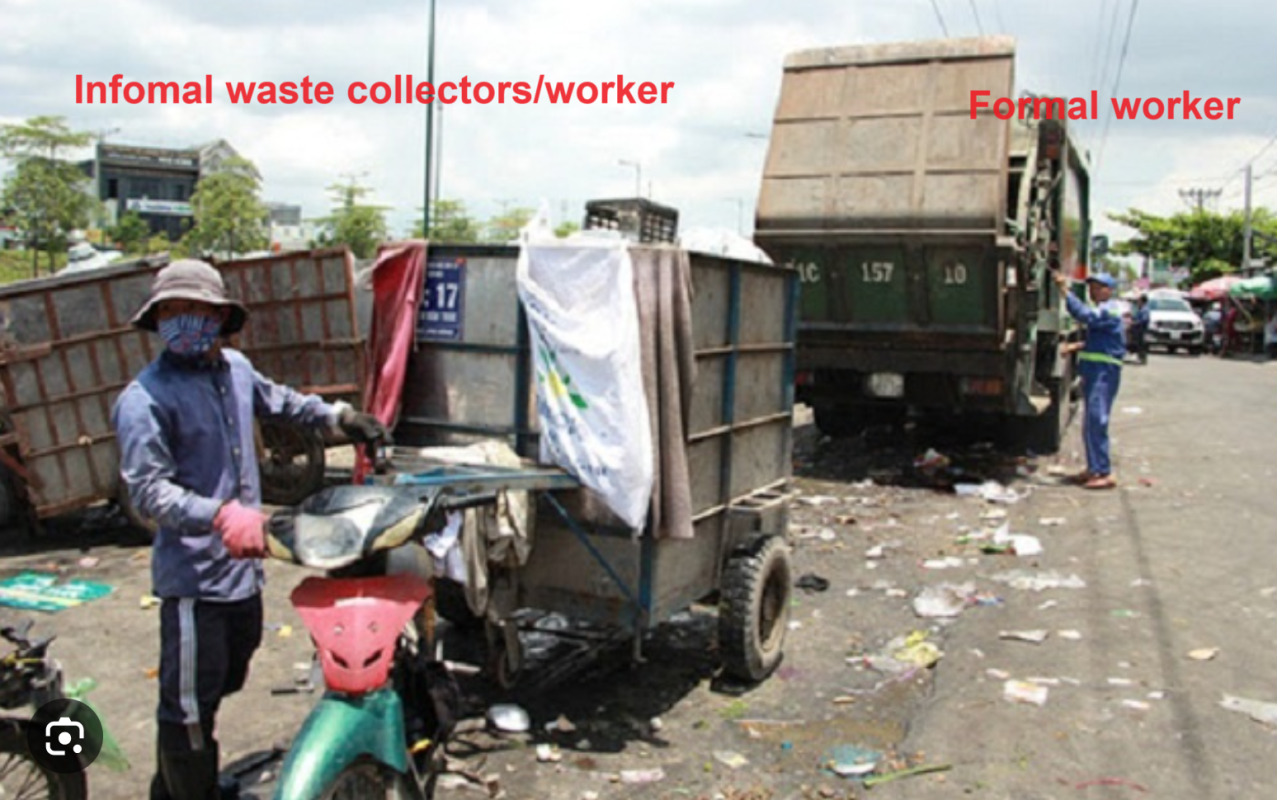Grac is contributing to the reduction of greenhouse gas emissions in Vietnam
Grac is contributing to the reduction of greenhouse gas emissions in Vietnam
In Vietnam, solid waste disposal on land contributes to approximately 54.28% of the country’s greenhouse gas emissions. However, the exact quantity of these emissions in terms of metric tons or other units is not specified in the available resources. It’s important to note that these emissions largely consist of methane, a potent greenhouse gas that is released when organic waste decomposes in landfills. Effective waste management strategies, such as those being implemented by Grac, can help to significantly reduce these emissions.
Grac’s environmental objectives to 2030:
- Collect Plastic waste 589,500 tons/year.
- Help Local goverments and partners REDUCE municipal waste 10 % of 23,600,000 tons/year.
- Help Local goverments and partners REDUCE Greenhouse gas emissions 10 % of 31,3 (Mt CO2 eq) (DCC – MONRE, 2020)
GRAC’S TECHNOLOGY APPLICATION:
- Waste bags QR code
- Pay as you throw (PAYT)
- Online payment gate way
- Digital tranformation
- implement circular economy platform and book on-demand: Plastic waste, food waste, bulky waste, Recyclable material,…
The current state of waste management in Vietnam is as follows:
- Waste Control Decree: On January 10, 2022, the Vietnamese government established the Decree No. 08/2022/ND-CP Detailing a Number of Articles of Law on Environmental Protection 20201. This decree specifies detailed requirements for storage, handover, transportation, treatment, and other activities in terms of management of municipal solid waste, general industrial solid waste, and hazardous waste.
- Waste Collection: The collection rates are 92% and 66% for urban and rural areas, respectively.
- Waste Treatment: Currently, Vietnam has 1,322 waste treatment facilities including 381 incinerators, 37 composting plants, 904 landfills (only 20% is categorized as sanitary landfills) treating 13%, 16%, and 71% of collected solid waste.
- Landfill Usage: About 85% of the waste generated in Vietnam is being buried without treatment in landfill sites, 80% of which are unhygienic and pollute the environment.
- 3R Campaign: The national 3R (Reduce, Recycle, Reuse) campaign gained momentum with wastes being dumped into the nearest landfills.
- Plastic Scrap Management: Vietnam differentiates between wastes and scraps. Scraps means materials recovered, sorted or selected from materials and products discarded during the process of production or consumption for use as materials for another production process.
These points highlight the current state of waste management in Vietnam. The country is making continuous efforts to manage solid waste in an innovative and creative way.
Grac is helping local government in waste management
Grac is providing solutions for digital transformation in waste management and building a circular economy platform. It provides affordable waste and recycling solutions for local governments. Here’s how it helps:
- Digital Transformation: The Grac app is being used by waste collectors in Ho Chi Minh City to digitize waste management. This makes waste collection more efficient and ensures that waste is properly disposed of.
- Connecting Stakeholders : Grac is a platform that connects garbage collectors and collectors and transporters¹. The information on Grac is checked and supported by the state management agency in charge of the environment¹.
- Education and Awareness: Grac also works to educate users about sustainability. Through the app’s news feed and blog posts, users can stay up-to-date on the latest zero-waste news and learn how they can do their part to reduce their environmental impact.
- Incentives for Recycling: The Grac App incentivizes users to recycle and make smarter decisions when it comes to waste. By providing rewards and points for recycling, users are encouraged to reduce their impact on the environment.
By leveraging technology, Grac is helping local governments make waste management more efficient and sustainable.
Grac contributes to the reduction of greenhouse gas (GHG) emissions in several ways:
- Waste Classification: Grac guides people to dispose of garbage properly, classifying garbage according to regulations. This helps to ensure that recyclable and reusable items don’t end up in landfills, thereby reducing the amount of methane, a potent greenhouse gas, that is released when organic waste decomposes in landfills.
- Recycling and Reuse: The app allows users to find, trade, and recycle items such as furniture, books, and clothing. By promoting the reuse and recycling of items, Grac helps to reduce the amount of waste that ends up in landfills, thereby reducing GHG emissions.
- Donation: Grac also allows users to donate items to charity¹. This not only helps those in need but also reduces the amount of waste that ends up in landfills, thereby reducing GHG emissions.
- Connecting Stakeholders: Grac connects garbage collectors and collectors and transporters. This ensures that waste is properly disposed of and doesn’t end up in landfills, thereby reducing GHG emissions.
- Education: Grac educates users about sustainability and the importance of reducing waste. This helps to change attitudes towards waste and encourages more sustainable behaviors, which can lead to reduced GHG emissions.
By leveraging technology, Grac is helping to make waste management in Vietnam more efficient and sustainable, thereby reducing GHG emissions.
Grac and plastic waste collection and connection with informal sector
Grac is an application that guides people to dispose of garbage properly, classifying garbage according to regulations. It connects garbage collectors and collectors and transporters. The information on Grac is checked and supported by the state management agency in charge of the environment.
The app allows users to find, trade, and recycle items such as furniture, books, and clothing. By promoting the reuse and recycling of items, Grac helps to reduce the amount of waste that ends up in landfills, thereby reducing greenhouse gas emissions.
The informal waste sector is critical for creating a more circular economy and helping to end plastic pollution. Informal waste collectors are the foundation of waste collection, sorting, and recycling—they are responsible for over half of all plastic waste collected and recycled globally. Grac’s platform can potentially engage with this informal sector, providing a digital transformation in waste management and building a circular economy platform.
The Grac app and Grac software seem to be different products serving different purposes.
The Grac app, also known as “Grac – Sống xanh cùng Saola”, is an application that guides people to dispose of garbage properly, classifying garbage according to regulations. It connects garbage collectors and collectors and transporters. The app allows users to find, trade, and recycle items such as furniture, books, and clothing. By promoting the reuse and recycling of items, Grac helps to reduce the amount of waste that ends up in landfills, thereby reducing greenhouse gas emissions.
On the other hand, the “Grac software” – S.a.a.S ERP Grac provides affordable waste and recycling solutions for local governments, businesses seeking a smarter, sustainable alternative. Mr Nguyễn Trọng Minh – CEO Grac Tech said the application of waste management software and data digitisation would be a feasible option to help public officials at ward and commune levels to manage waste more effectively and easily.
You can download the Grac app from the Google Play Store. Here are the steps:
1. Open the Google Play Store on your Android device.
2. In the search bar at the top, type “Grac – Sống xanh cùng Saola” and press enter.
3. Click on the app in the search results.
4. Click on the “Install” button to download and install the app.
You can also visit the app’s page directly by click. Enjoy using Grac for a greener lifestyle!
Grac is contributing to the reduction of greenhouse gas emissions and building Circular Economy platform in Vietnam
Grac app is a mobile app that aims to promote a circular economy in Vietnam by encouraging the exchange of older items for new ones. The app allows users to upload photos of items they no longer need, and other users can browse these items and request them. If the owner of the item approves the request, the two parties can arrange a time and place to meet and exchange the item. The app also has a feature that allows users to earn points for each item they exchange, which can be used to redeem discounts on new items.


